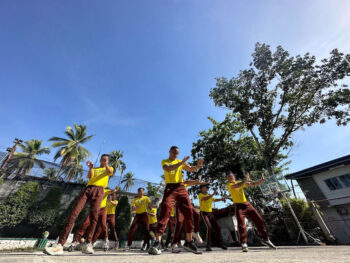DAVAO CITY (October 16) – A four-hour ride from Valencia City, Bukidnon to Talaingod town in Davao del Norte early this month revealed surprises as well as brought anxieties on what the future may hold for a frontier that has slowly attracted settlers who have established colonies along the dirt road that connects the two provinces. The shanties built by Lumads as well as migrants, the continuing degradation of the surrounding landscape and yes, the sight of an ageing truck loaded with logs by around a dozen men as twilight fell reminded me that we’re passing along another road to perdition.
Exasperated by what I saw, I told myself to inhale the scenes along the way as they may only be thriving on borrowed time. A few years or months from now, depending on the rate of migration and pace of “development,” much of the splendor will just be a memory. These morbid thoughts preoccupied my mind as our vehicle snaked through the desolate span of largely unpaved highway, illuminated by the faint glow of a sinking sun. Many times I’d look back to catch one more glimpse of the beauty behind, only to get the eerie feeling that soon nostalgia will be the only thing that this place could offer.
Imagine the Bukidnon-Davao City highway 20 years ago to get an idea of how the present-day Talaingod road looks like. Time-lapse photography would have captured the maddening pace with which migrants, speculators and the filthy rich gradually invaded the areas along or near the former logging road for agriculture, settlements and resorts. Like vultures hovering above dying preys, the same threats haunt Talaingod’s interior villages with the opening of the highway.
But for whom is this highway? The answer probably lies in the presence of major economic actors that stand to profit from it. For one, it will shorten the travel time of trucks carrying bananas and other produce from Davao del Norte to Cagayan de Oro City especially if it’s completely paved. At present, the paved portion is only around 10 percent or less.
Mining firms that are eyeing to disembowel the mountains of Davao del Norte and Pantaron Range in Bukidnon will also profit much from the project. Count in the loggers too who have had made a killing even before the government built the road. Soon too, like in areas along
the Bukidnon-Davao highway, urban-based wealthy individuals will start buying up lands where they will construct high-end resorts or stylish mansions which will remain idle most of the time.
The only thing going against them is that the government may need a budget far bigger than expected owing to the precarious condition of the road. Most parts are prone to landslides and apparently sit on loose soil. In fact, there were portions where the pavement had cracked and started to sink. If the cracks and depressions weren’t caused by soil stability, shall we conclude that those portions weren’t built according to sound engineering practice?
Last thing I heard, journalists from Davao City were toured to the Talaingod-Bukidnon road a couple of months back – but only up to the cemented portion in Talaingod. Any word from the contractor or perhaps from the Department of Public Works and Highways? (MindaViews is the opinion section of MindaNews. H. Marcos C. Mordeno can be reached at hmcmordeno@gmail.com.)







